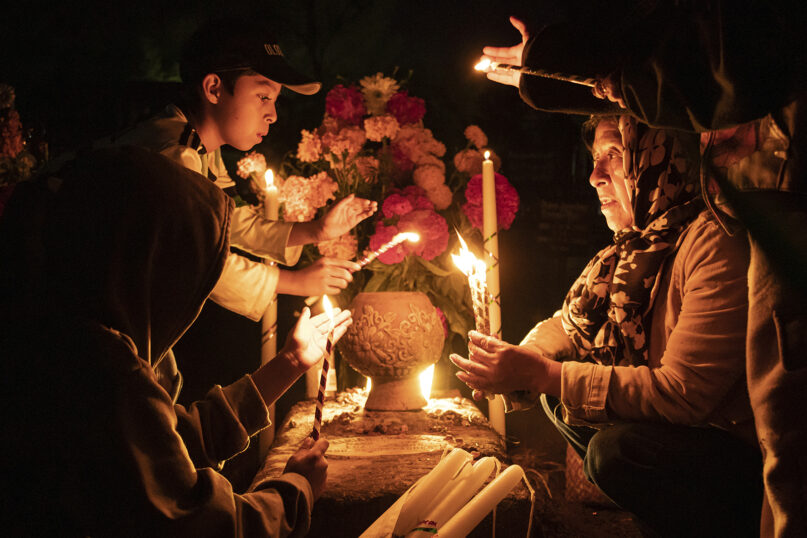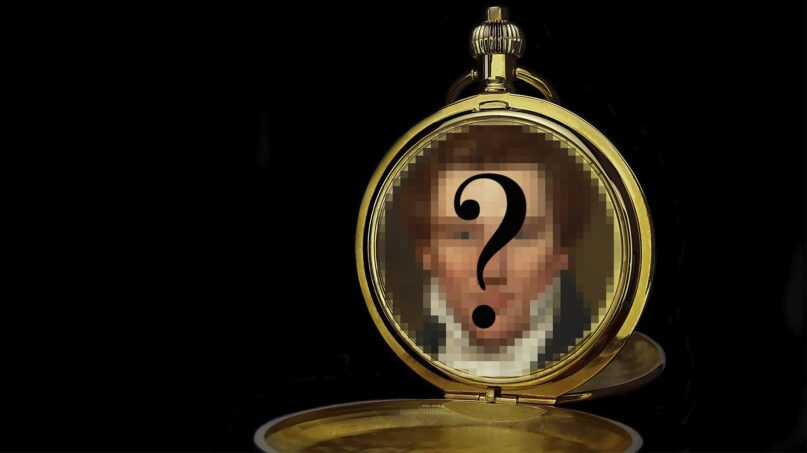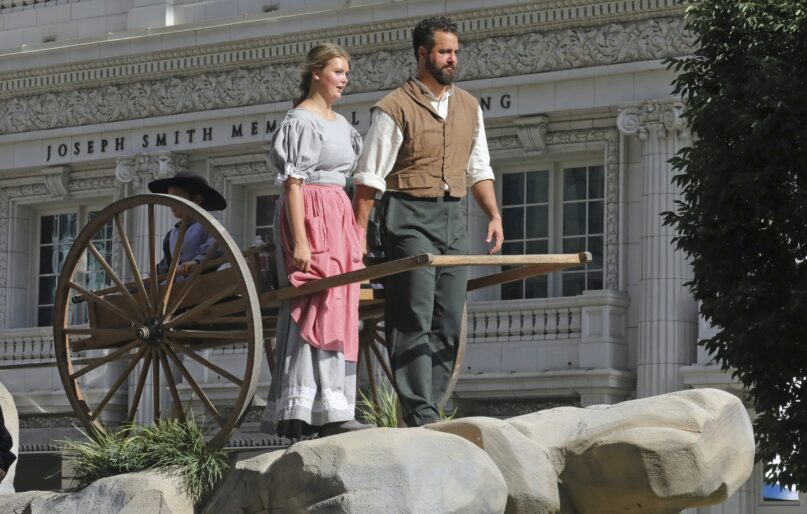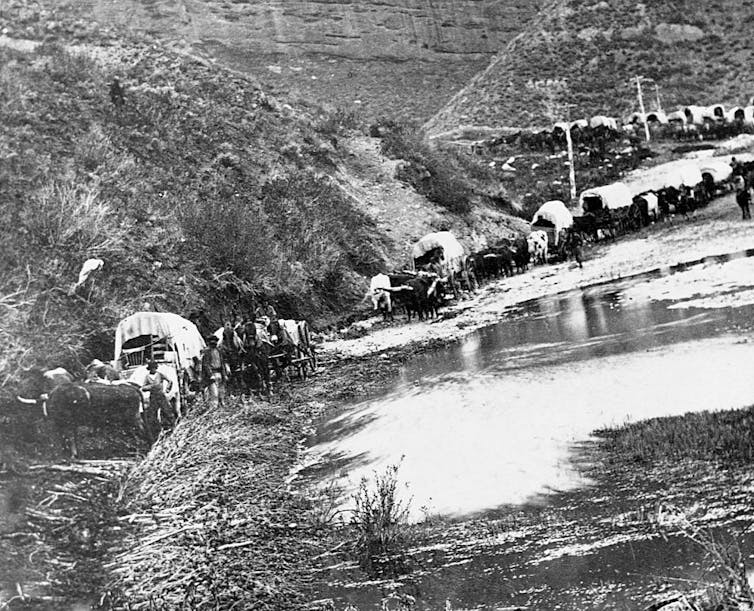MINNEAPOLIS (AP) — These crucial religious, family and community celebrations for most Mexicans and many other Latin Americans have taken on special significance this year in U.S. Latino communities, as the Trump administration escalates immigration enforcement raids, including in Minnesota.

Giovanna Dell'orto
November 3, 2025
MINNEAPOLIS (AP) — More than 100 people followed Aztec dancers through an arch of paper flowers into El Colegio High School on Saturday morning to visit altars that students had created to commemorate Día de Muertos or Day of the Dead.
“It’s … a way of greeting our ancestors into our homes, back into our lives, even if they’re like not here physically, but spiritually,” said Daniela Rosales, a senior at the small, bilingual school in Minneapolis. “It’s a way of just having the community come all together and knowing that in some way they might feel safe.”
These crucial religious, family and community celebrations for most Mexicans and many other Latin Americans have taken on special significance this year in U.S. Latino communities, as the Trump administration escalates immigration enforcement raids, including in Minnesota.
While some organizers worried that fears of deportation would cast a pall on public celebrations, participants turned out in droves in cities big and small, saying the rituals brought a much-needed sense of resilience and community pride.
“We decided we can’t cave,” said Justin Ek, one of the founders of the Day of the Dead festival in Mankato, a city in the Minnesota farmland. “Our cultural celebrations are what we need to fill our souls for what’s to come.”
The Indigenous Latino artist’s family started a small commemoration in the parking lot of their painting business in 2018. This year, some 12,000 people joined the daylong celebration that included live music and several dozen papier-mâché sculptures of Catrinas (elaborately dressed skeletons) and fantasy creatures called alebrijes. Most activities were funded by community donations.
Grieving, but with happiness: The spiritual side of Day of the Dead
Ek’s father came to the U.S. from Mexico as a preteen, and in the struggle to make a living and eventually build a family, many connections with his homeland and relatives there disappeared, Ek said.
Day of the Dead festivities became a way to grieve that and rekindle some ties, he added, in addition to commemorating more recent family deaths.
“It’s our way to honor what we lost,” Ek said.
The holiday’s balance of joyful remembrance and a renewed sense of presence distinguishes it from both the outright party atmosphere of Halloween and the somber memorials of the Christian holy days of All Saints on Nov. 1 and All Souls’ Day on Nov. 2.
In fact, Day of the Dead evolved over centuries from Indigenous practices across the Americas, and only settled on these fall dates after Catholicism was introduced, said Cary Cordova, a University of Texas professor.
Different regions mark it with unique details, but the crucial element is paying homage to the dead with “ofrendas,” festive offerings of food, drinks, music and pastimes favorite by the dead. Their souls, many believe, return for a visit, guided by the candles and marigold flowers that mark the path to the ofrendas.
Whether in his Mexican childhood or today in Mankato, Luis Alberto Orozco said the key is to commemorate by “having fun as they would be” — with the departed’s favorite snacks and songs.
“It’s remembering people who passed on positively because they would want us to remember them happy … and making ourselves feel they’re with us,” Orozco said.
Joyful and prideful commemorations defy fears of immigration enforcement
As the emcee of this year’s celebration, Orozco reflected on tense conversations in recent months about whether the event in Mankato might draw immigration enforcement raids, especially as rumors spread on social media.
“We decided we were not going to be afraid. It was important for us to keep our faith,” he said. “Once I got to the event and saw all the people smile, all the fears went away.”
The recent crackdown on illegal immigration in Chicago has generated controversy and stirred fears across that city.
Lisa Noce, some of whose ancestors immigrated from Mexico to Chicago’s Pilsen neighborhood where she grew up, worried people would stay away from a Day of the Dead installation she helped create by the National Museum of Mexican Art there. But a big crowd came.
“I’m very thankful that it turned out that way,” she said, adding that she also sets up a smaller ofrenda in her kitchen with candy, Barbie dolls, and smiling photos of deceased family members.
‘Ofrendas’ range from family shrines to political statements
For more than a century, Day of the Dead artistic representations have also moved from the family to the public sphere.
Starting in Mexico and later through the Chicano rights movement in the United States, ofrendas have also become a form of protest covering often marginalized victims, said Luis Fitch, a Minneapolis artist who has created Day of the Dead images for retail giant Target and the U.S. Postal Service.
In Los Angeles, site of some of the strongest enforcement actions, a group advocating for detained migrants planned for Sunday a prayer with Buddhist, Jewish and Protestant Christian rituals as well as altars commemorating those who died in detention, said the Rev. Jennifer Gutierrez, one of the organizers.
“There’s pretty high anxiety,” said Gutierrez, a United Methodist minister. “But also an atmosphere of coming together to help each other.”
Back at El Colegio High School, the half dozen altars with flickering candles, decorated candy skulls and a profusion of paper flowers commemorated local and global losses.
There were pictures of the children killed at a school Mass just 3 miles (5 kilometers) away, but also those who died crossing the U.S-Mexican border as well as victims of the terror attacks on 9/11, the war in Gaza and violence against Indigenous women.
“We try to keep our sources of spiritual strength always nourished,” said Susana De Leon, one of the traditional Aztec dancers who got the commemoration started at El Colegio.“When the community sees us dancing, they feel strengthened. They feel the love.”
MADRID (AP) — The sobriety of the Catholic tradition, by which on All Saints' Day graves are cleaned and flowers are brought to cemeteries to spend time with deceased loved ones, has given way in recent years to sweets, fake blood, and spider webs from one of the most iconic holidays in the United States.
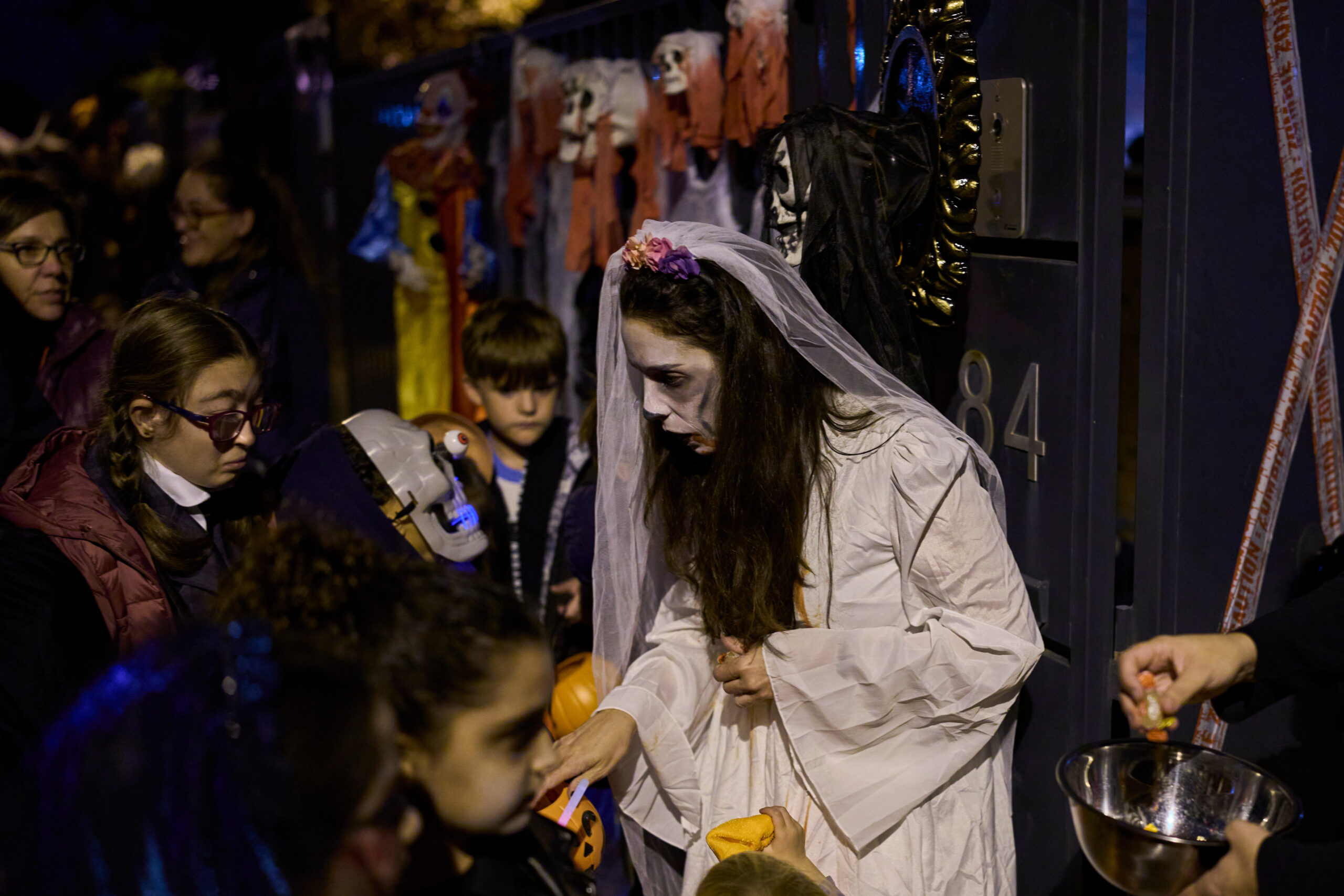
Alicia Leon and Teresa Medrano
November 3, 2025
MADRID (AP) — Skeletons, ghosts, and monsters of all kinds took to the streets of many cities in Spain at nightfall to celebrate Halloween. The next morning, an older generation flocked to the country’s cemeteries to remember their dead.
The sobriety of the Catholic tradition, by which on All Saints’ Day graves are cleaned and flowers are brought to cemeteries to spend time with deceased loved ones, has given way in recent years to sweets, fake blood, and spider webs from one of the most iconic holidays in the United States.
As in many other parts of the world, instead of their own ancestral traditions, younger people have embraced the more commercial side of a celebration that originated from the pagan festival of Samhain, which honored the end of summer and the harvest. And it does not appear that they will follow in the footsteps of their elders.
The cultural change did not happen overnight, but is a consequence of the secularization of societies, explained José Bobadilla, a sociologist specialized in culture and religious diversity.
“Obviously, the process of a new, more Americanized culture has had an influence not only in Europe,” said Bobadilla, who noted that the current celebration, which is spreading throughout the world, “downplays the idea that it is a time to remember those who are no longer with us.”
The Almudena cemetery in Madrid, the largest in Spain with some five million people buried there, began receiving its first visitors early in the morning.
At the main entrance, several flower stalls waited with bouquets ready for those who left the arrangement of the graves to the last minute.
“We always come on (Nov) 1st,” said Alicia Sánchez, a 69-year-old retiree who lamented the loss of tradition due to a lack of interest among younger people.
“I don’t like Halloween because it’s not our holiday. But everyone has their traditions, and that should be respected,” she said.
Paz Sánchez visited her husband’s grave with his son, as they do on many other days. This time, however, they were surprised to see so few people despite it being the busiest day of the year.
“Maybe they don’t feel like getting up early to come to the cemetery,” said Sánchez, 87.
A few hours earlier, as in the last decade, Paracuellos de Jarama, a town about 30 kilometers (18.6 miles) northeast of Madrid, dressed up for Halloween.
It started with just a few neighbors, but now dozens of houses are decorated with pumpkins and ghosts, there is a haunted passageway, and hundreds of people roam the streets trick-or-treating.
Miguel Izquierdo transformed his family home into a pirate ship with recycled wood for the hull and an old sheet as a sail. The lights, music, and 30 kilos (66 pounds) of candy, which ran out in less than two hours, made it one of the most popular.
After three years, they continue to participate “because of how much fun the children have,” said Izquierdo, 42, who runs an audiovisual production company. “We like it because it’s a party, because it’s a costume party, and because there’s candy.”
“I don’t dislike the party, but I think it’s not part of our traditions,” said Antonia Martín, 68, who celebrated Halloween – without costume – for the first time for her grandchildren.
Associated Press religion coverage receives support through the AP’s collaboration with The Conversation US, with funding from Lilly Endowment Inc. The AP is solely responsible for this content.

